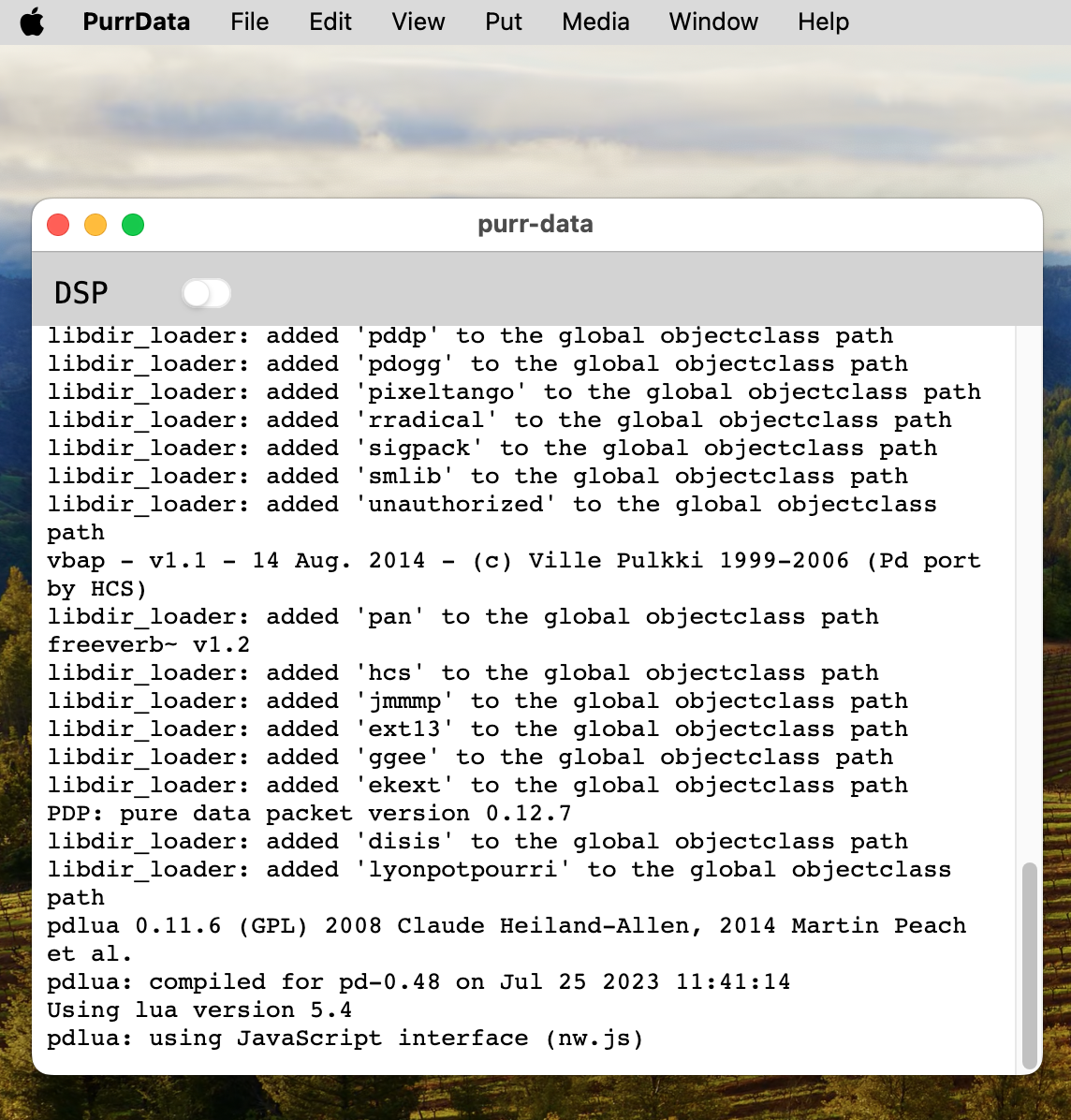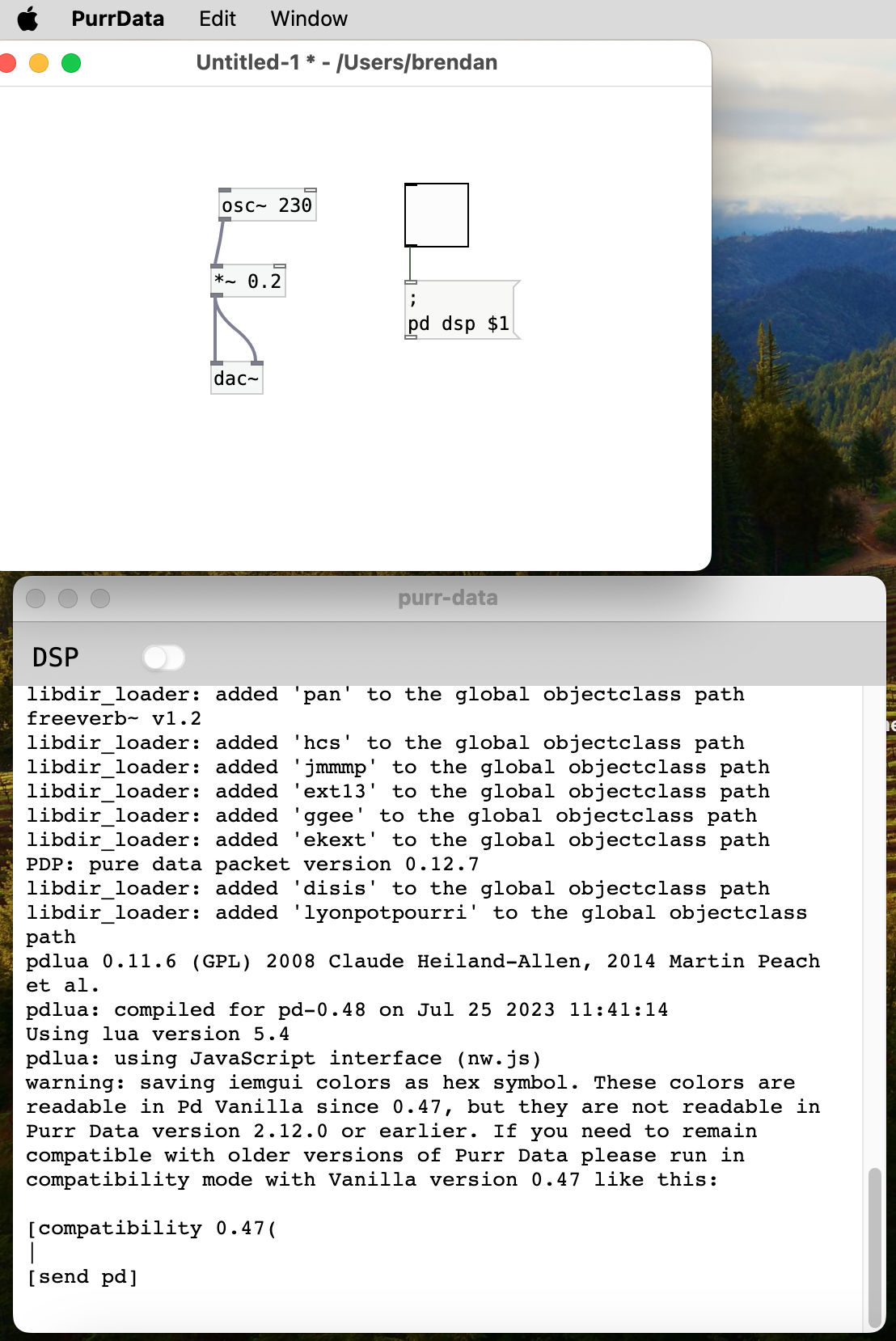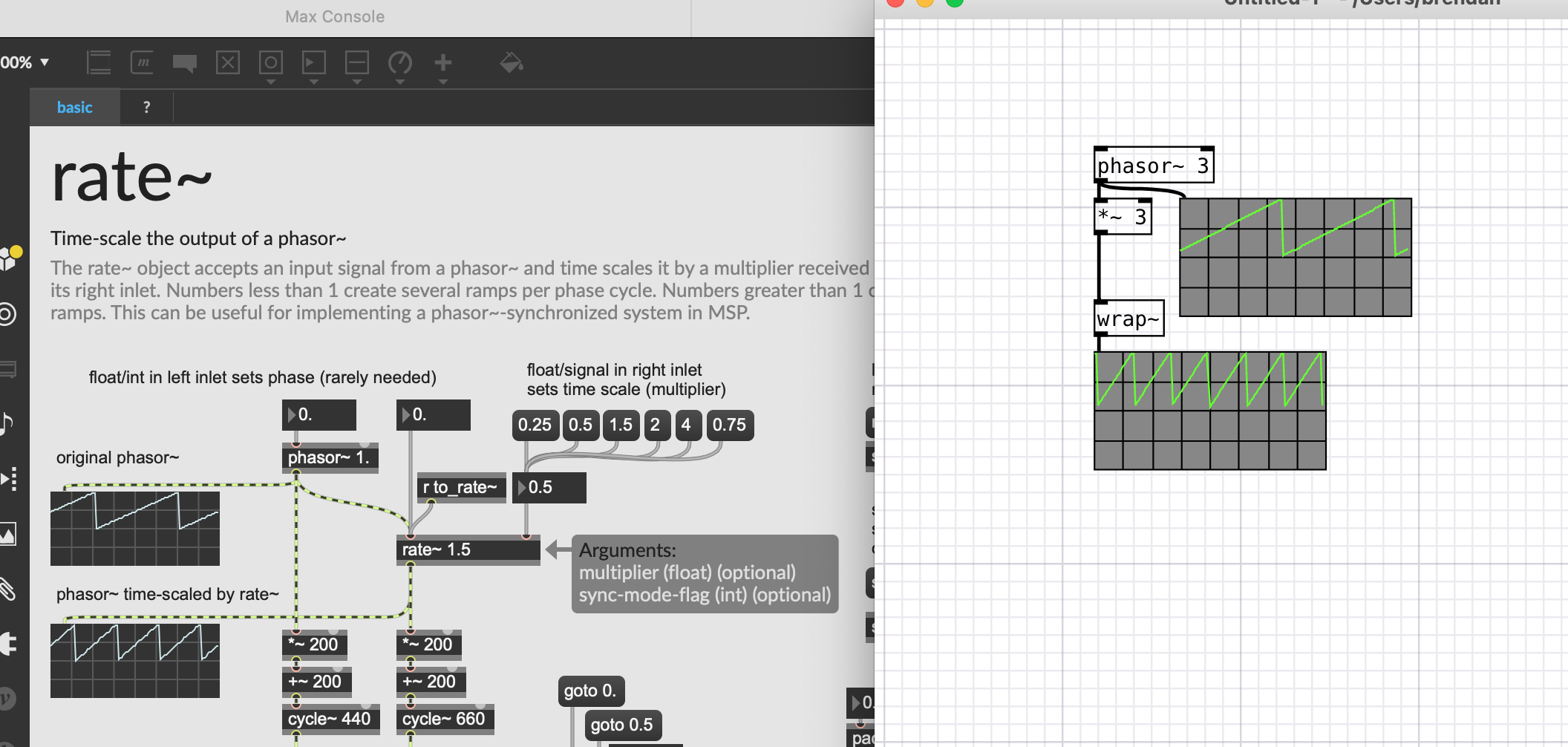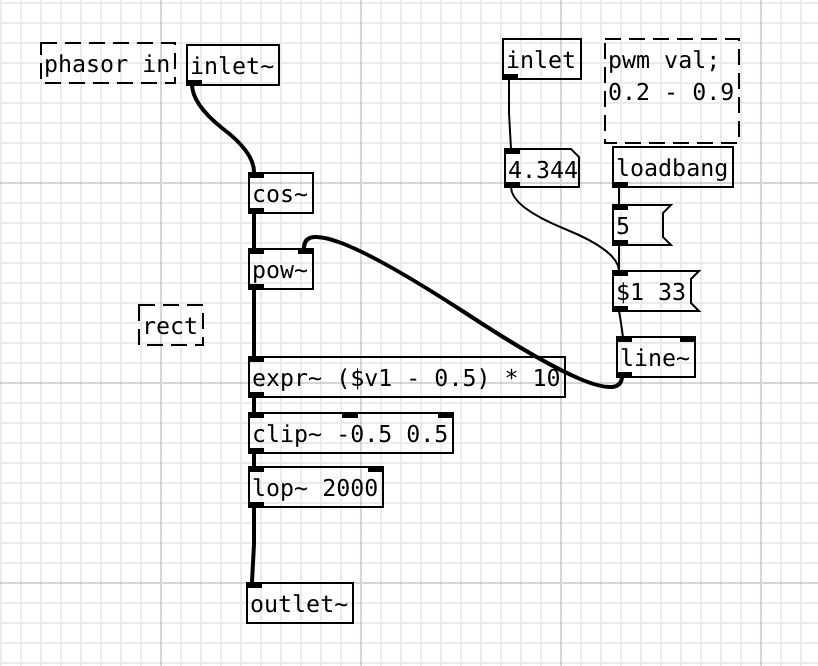-
-
PD-Pi
posted in technical issues • read moreHi
read the helpfile for [vline~], that message means "go to 1 in 5ms, then after 5 ms go to 0 in 20ms". Remember, that impulse has no 'real world' physical characteristics of its own, it's just a filtered noise burst.PD-Pi
-
PD-Pi
posted in technical issues • read moreHi
you could shape your own impulse, using noise~ into an envelope and filter. Not sure how that will affect your output frequency spectrum though
PD-Pi
imp.pd -
-
PD-Pi
posted in technical issues • read morethanks for the advice @alexandros; I might revert to vanilla.
-
PD-Pi
posted in technical issues • read more. . . but if I launch PD by loading a .pd file, the menu bar remains correct and intact - strange behaviour from the purrdata application launcher
-
PD-Pi
posted in technical issues • read moreHi
Purr Data is behaving strangely since I recently updated it. When I first launch it, it appears fine:
But when I create a new patch, it changes to this:

Note the missing menu bar items.
Am I a newb, is this the wrong forum?
Halp
-
-
PD-Pi
posted in technical issues • read moreI just want to thank everyone for the detailed responses here, which has inadvertently but interestingly diverged into a slightly different topic. It makes interesting reading.
PD-Pi
-
-
PD-Pi
posted in technical issues • read moreYou mean how it works internally? Probably a modulo function.
-
PD-Pi
posted in technical issues • read moreHi
I'm not sure what the PD equivelants are, but in Max I would have done this with rate~ on a central phasor. I think (it's been a while )
)Brendan
-
PD-Pi
posted in technical issues • read moreHi
if you share the important elements (Bela --> PD) from your patch here, we'll certainly have a look - I'm not familiar with Bela myself but have experience using Arduino with PD.PD-Pi
-
PD-Pi
posted in technical issues • read moreyep! you're right, i'll keep chipping away at this, thanks
-
PD-Pi
posted in technical issues • read moreThanks for chipping in. I should have mentioned a few things: this won't be a commercial or professional product, just for my own noodlings (I was looking at Behringer's recent line of HW synths and thought, why am I spending money, just build one in PD). So, the detail you mention isn't critical to me.
I could of course just make two different versions and see which one I like the sound of; plus, doing it that way will throw up any issues along the way.
Thanks again
Brendan -
PD-Pi
posted in technical issues • read moreMorning good people,
I'm making steady progress on a simple polyphonic MIDI synth, and the post title says it all really. I have a single phasor driving a variety of oscillators (rect, saw etc), and am about the polyphonise (?) it. Would you put that phasor inside the clone object, where the shaping functions will go, or not? An 'outside' signal will of course go to all voices, and there may be phase issues with mutiple copies if I put it inside.Kinda answered my own question there, but would love to hear your thoughts
PD-Pi



